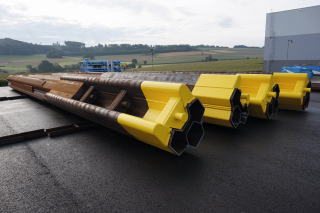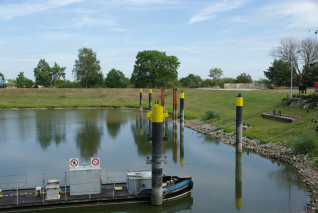Dolphins
In engineering terms, a dolphin is a pile or group of piles with fixity in the bed of the watercourse and subjected to a horizontal load. The bed of the watercourse is generally the in situ soil, the critical horizontal load mostly caused by the impact of a vessel.
Dolphins vary in terms of their construction and function and can be basically divided into two groups depending on their purpose:
- Breasting dolphins: used for berthing, guiding and deflecting vessels and marking navigation channels. These dolphins must be as elastic as possible to prevent damaging vessels. Large impact loads are resisted by the deformation work of the dolphin and the subsoil.
- Mooring dolphins: used for mooring and hauling. A rigid design is more suitable for this type of dolphin. A rigid dolphin is also advantageous when casting-off.
In Germany in particular, dolphins are constructed from sheet pile materials. Such dolphins are assembled from between two and eight sheet pile sections that are welded together over their entire length. Another variation is the dolphin made from a single tubular section – with thick wall and large outside diameter.
Depending on their function, dolphins are equipped with bollards on the top and sides, mooring hooks or recessed bollards, ladders and plates to resist impacts.
Upon request, dolphins can be coated in our works.



